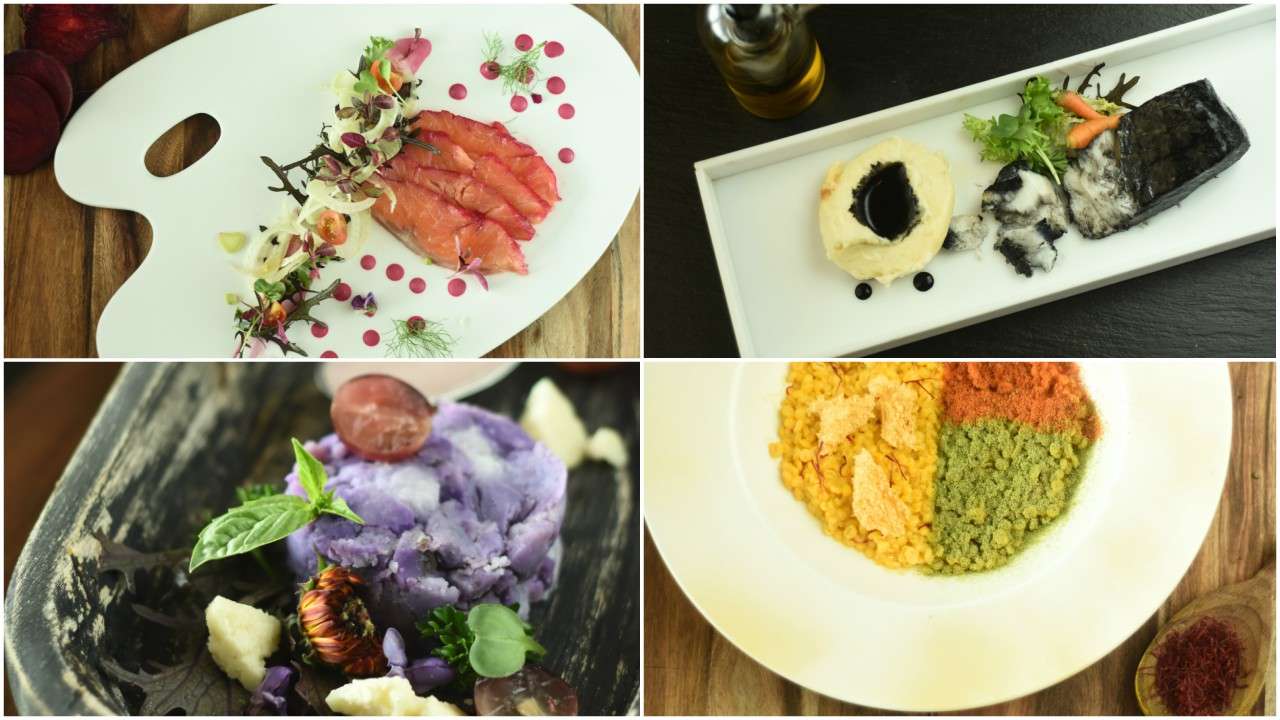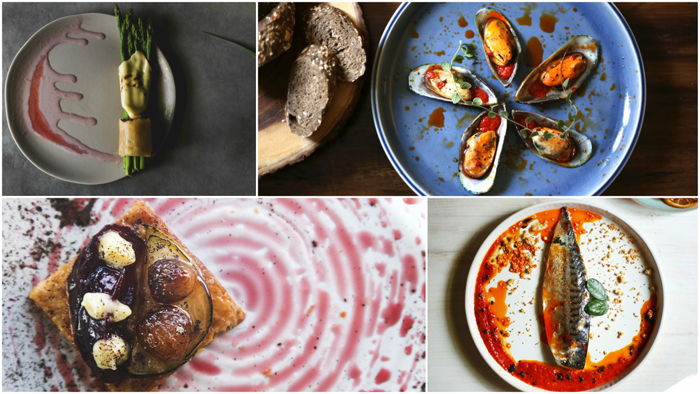
What makes the perfect meal? Ask Chef Roberto Zorzoli, and he's quick to evoke the senses. "It should be more than flavours. It should be about the aroma, about the visuals and elements unfolding into a complete sensorial journey," insists Zorzoli, whose project 'colour palate' aims to explore this rather graphic idea of gastronomy through a seasonal offering at Romano, JW Marriot Mumbai Sahar's Italian restaurant. While infusing provocative colours in recipes is a standard procedure, Zorzoli's innovation, available to taste from February 1-15, lies in borrowing the colour pigments from natural ingredients.
A good instance would be the Purple Potato Cake, where potato-and-grape cheese fondue share room with micro greens and Pecorino (ewe-milk cheese) flakes — Anthocyanin from the grape skin turning the macerated potato a lush lilac-blue. Then there's the salmon, cured in beetroot and served in a bloom of pink-and-red, where betaine (from the beetroot) does the trick.
“Different techniques are used to extract natural edible dyes, since some pigments are water soluble while some are oil soluble,” Zorzoli explains. On his menu, pigments from betaine resources are slow dried and ground to a powder form, to be used in mousse or pasta, while naturally green pigments from herbs and leafy vegetables are extracted by simmering them and skimming the colour once it formed a layer on the surface. Similarly, orange tints, from carotenoids, are extracted when emulsified with oil. This behind the scenes complexity holds true for everything else on the menu. For the Blackened Chilean Sea Bass, the usually pale skin of the fish has been dressed in the dark hues of squid ink, then paired with light-on-the-tongue celeriac puree and wine butter sauce. Here, it is melanin from the squid ink that dramatises the visuals. “For green there's chlorophyll from herbs and for yellow, curcumin from turmeric,” adds the chef, positive that the colours on your plate can actually impact your appetite. After all, don't people “eat with their eyes first?”

(Chef Sarita Pereira believes in adding natural pigments in the form of infused oils or dehydrated powder)
Chef Sarita Pereira, who runs her own flavour-and-colour show at Bandra's “dinner laboratory” LoveFools, would agree. “The idea was to create a synaesthetic experience where different flavours dictate the progression of dishes across our eight course menus (which keep changing). Colour-play then, was essential, as the visual component is one of the first feelers sent out to a diner. He'd look at the colours, inhale the aroma and accordingly anticipate, say, a truffle and mushroom based earthiness (browns and ochres), a charred, smokey flavour (blacks and ashes) or a citrusy kick (yellows and oranges) in his first bite,” she says.
Like Zorzoli, Pereira has figured out distinct ways of extracting and employing natural pigments into her dishes. “It could be infused oils, dehydrated powder of fruits and vegetables, or smoked edible-ash from onion skin, depending on the dish,” she notes. The rather interesting-sounding onion ash, she uses to achieve the black colour and charred taste of one of her fish dishes that has a unique smoke-and-butter flavour. Pereira admits to her habit of expounding on a single element, whether flavour or colour. So when she creates a Zucchini roll flavoured with Parmesan, expect multiple undertones of saltiness, delivered variously as the pine wood-smoked filling, parmesan cheese infused oil, cheese sauce on the side and even frozen parmesan ice cream. The colour scheme, for its part, would feature different shades of the tinted cheese-white, the monotony broken carefully by not more than one burst of green, from the vegetable. Similarly, it is the hot pink of cranberry sauce that adds spunk to both her Blanched Asparagus with spicy onion jam and goat cheese, and the Avocado-Mango Mousse with chilli and sauce, aesthetically splattered around the dishes.
That the colour elements must add to the dish's final taste is something Pereira is very strict about. In one of her experiments — Salmon in Mustard Lemon Sauce — the fruity yellow of preserved lemons, roasted with herbs, lends itself to the silky tang of the dish, enhancing its beauty and character. If colours are dictated by flavours at LoveFools, the flavours themselves are decided by the personality of diners on a certain week. For both her private and community tables, Pereira runs a check of the expected milieu to twine taste and look, ushering you into a world of colours your fingers can part, and your mouth, polish off.